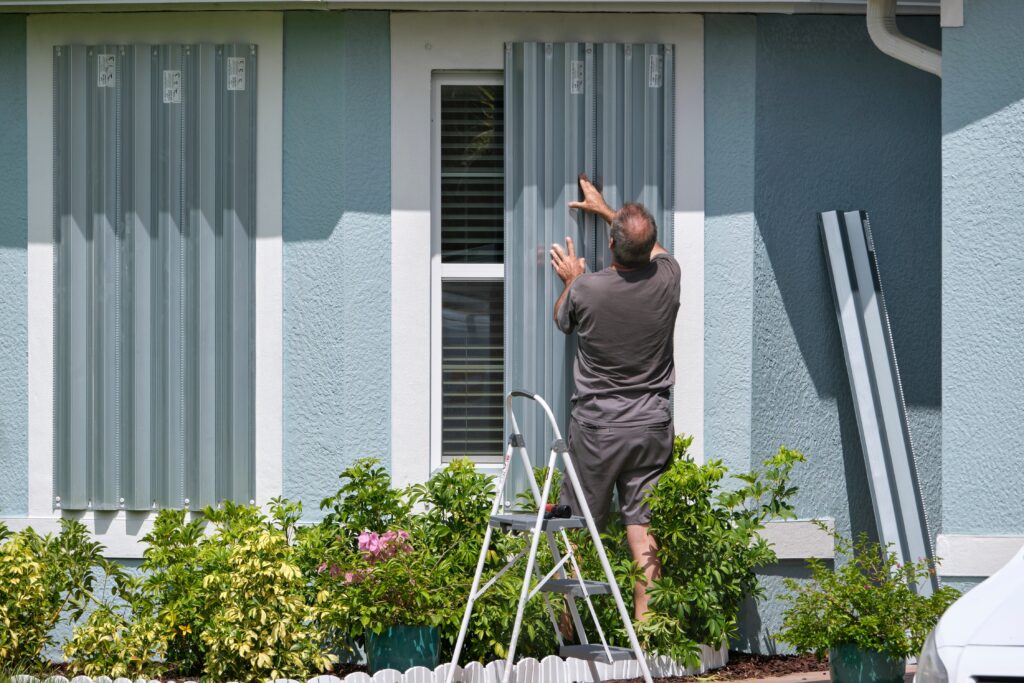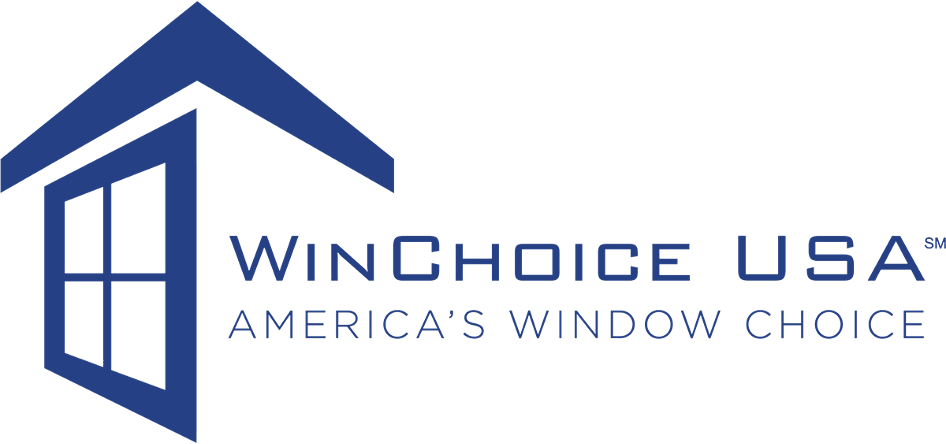Understanding Hurricane Windows

Did you know that hurricanes cause over $50 billion in property damage annually in the U.S.? As coastal storms grow in frequency and intensity, protecting your home from their devastating effects has become more critical than ever. One of the most effective ways to safeguard your property is by installing hurricane windows—a necessity, not a luxury, for homes in hurricane-prone regions.
Table of Contents
- What Are Hurricane Windows?
- Key Benefits of Hurricane Windows
- How Hurricane Windows Are Tested
- Cost vs. Benefits of Hurricane Windows
- Installation Considerations
- How to Maintain Hurricane Windows
- Additional Window Resources
What Are Hurricane Windows?
Hurricane windows, also known as impact-resistant windows, are specially designed to withstand extreme weather conditions like hurricanes and tropical storms. Unlike standard windows, hurricane windows consist of laminated glass—two panes of glass bonded together with a layer of polyvinyl butyral (PVB) or ethylene-vinyl acetate (EVA). This construction ensures that even if the glass shatters, the inner layer holds the broken pieces in place, preventing debris from entering your home.
The design is much more resilient than traditional windows, which can shatter into dangerous shards, leaving your home vulnerable during storms. Additionally, the construction of the frames is typically more robust, featuring materials like aluminum or reinforced vinyl, to support the thicker, laminated glass.
Differences Between Hurricane Windows and Standard Windows
There are several key differences between hurricane windows and regular windows:
- Laminated Glass: The use of multiple layers of glass and interlayers strengthens hurricane windows, making them significantly tougher than standard windows. These layers are designed to keep the glass intact even after impact, preventing debris from breaching the barrier.
- Impact Resistance: Hurricane windows are designed to withstand not only high winds but also direct impacts from flying debris. This is particularly important in areas prone to hurricanes, as flying objects can turn regular windows into entry points for wind and rain.
- Pressure Rating: Hurricane windows are engineered to withstand significant changes in pressure, a common occurrence during storms. High winds can create both positive and negative pressure on a home, and windows that aren’t pressure-rated can fail even without direct impact.
- Frame Reinforcement: While the glass is a major component, the frames also play an important role. They are typically reinforced to handle the stress of wind pressures and impacts. Most hurricane windows use vinyl, aluminum, or wood-clad aluminum frames, which are specifically designed to hold up under extreme conditions.
Key Benefits of Hurricane Windows
Hurricane windows offer a range of benefits beyond storm protection, making them a sound investment for coastal homeowners. In addition to offering peace of mind during storm season, they provide year-round advantages that can enhance your home’s value and comfort.
Storm Protection
The primary function of hurricane windows is to keep your home safe during severe storms. By preventing glass from shattering into dangerous shards and maintaining the structural integrity of your windows, hurricane windows can significantly reduce the risk of injury and damage. In storm-prone areas, the risk of flying debris breaking windows is high, and hurricane windows help prevent this from happening.
In fact, most hurricane windows are tested to withstand direct impact from a 9-pound piece of lumber traveling at 50 feet per second. This level of protection far exceeds what standard windows can provide.
Increased Security
Hurricane windows offer enhanced security against break-ins, as their durable construction makes it extremely difficult for intruders to force entry by breaking the glass. Standard windows can be easily broken with a tool like a crowbar, but hurricane windows are much more resistant to both blunt force and cutting tools.
In essence, hurricane windows provide 24/7 security against not only storms but also burglars. The same strength that keeps flying debris from breaking through your windows also keeps your home safe from forced entry.
Energy Efficiency
The airtight seals and insulating properties of hurricane windows contribute to better energy efficiency, reducing heat loss in winter and keeping your home cool in summer. This can lead to savings on your energy bills over time, as your HVAC system won’t have to work as hard to maintain a comfortable indoor temperature.
Additionally, the laminated glass blocks out up to 99% of UV rays, protecting your home’s interior from sun damage and further reducing cooling costs.
Noise Reduction
Hurricane windows also provide excellent noise reduction, making your home quieter by blocking out external sounds such as traffic, construction, or loud neighbors. This can significantly improve the comfort and livability of your home, especially if you live in a noisy urban or suburban area. The multiple layers of laminated glass act as soundproofing, helping to muffle loud outdoor sounds.
Insurance Premium Discounts
Many insurance companies offer lower premiums to homeowners who install hurricane windows, particularly in hurricane-prone regions. The reasoning is simple: homes with hurricane windows are less likely to sustain catastrophic damage during storms, which means fewer claims for the insurer. Depending on where you live, the insurance savings could help offset the initial investment in hurricane windows.
How Hurricane Windows Are Tested
Hurricane windows must pass rigorous testing to ensure they meet safety standards. One of the most common tests is the Large Missile Impact Test, which involves launching a 9-pound piece of lumber at speeds of up to 50 feet per second to simulate storm debris. Additionally, windows are tested for pressure resistance, ensuring they can handle both the positive and negative pressures exerted by high winds during storms.
Certifications to Look For
When purchasing hurricane windows, it’s essential to check for certifications such as the Miami-Dade County Notice of Acceptance (NOA) or the ASTM International standards. These certifications guarantee that the windows meet the strictest requirements for hurricane impact resistance.
- Miami-Dade NOA: Widely recognized as one of the most stringent certifications for impact-resistant products. Windows that pass this certification are tested to withstand large missile impacts and significant pressure changes.
- ASTM E1996: This certification outlines the testing standards for windows, doors, and other glazed openings for protection during hurricanes. It involves testing products to ensure they can withstand both windborne debris and high wind pressures.
By ensuring that your windows have the right certifications, you can be confident they’ll perform when it matters most.
Cost vs. Benefits of Hurricane Windows
The upfront cost of hurricane windows can be high, but the long-term benefits often outweigh the initial investment. Let’s break down the costs and savings you can expect over time.
Initial Cost
On average, hurricane windows cost between $2,000 and $14,000, depending on the size and number of windows, as well as the materials used. Premium materials like wood-clad frames or custom shapes can drive up the cost. Installation adds an additional $100 to $450 per window, depending on complexity. While this may seem expensive, these windows can also increase your home’s resale value, particularly in coastal regions where buyers actively seek out storm protection features.
Long-Term Value
The initial investment in hurricane windows can pay off over time in several ways. First, many homeowners will see reductions in their homeowners’ insurance premiums, with some insurers offering discounts of up to 20% for homes equipped with hurricane-rated windows. Second, hurricane windows can help avoid costly repairs after storms, potentially saving thousands of dollars in repair and replacement costs.
Moreover, by improving your home’s energy efficiency, you’ll also save on heating and cooling costs, leading to long-term savings on utility bills.
Comparison with Other Storm Protection Methods
When compared to other storm protection methods like storm shutters or plywood boarding, hurricane windows provide year-round benefits. While shutters and plywood are effective at preventing damage during storms, they offer no additional value outside of storm season. Additionally, storm shutters and boards need to be installed and removed each time a storm approaches, which can be labor-intensive.
In contrast, hurricane windows provide continuous protection with no need for additional preparation. They also enhance your home’s energy efficiency and security, which shutters and boards cannot do.
Installation Considerations
Proper installation is crucial to the effectiveness of hurricane windows. Poor installation can compromise the window’s ability to protect against storms and lead to air or water leaks. Let’s take a closer look at what’s involved in the installation process.
Retrofitting vs. New Construction
Retrofitting hurricane windows into an existing home can be more expensive than installing them in a new build. In retrofits, the old window frames may need to be modified or replaced to accommodate the thicker hurricane windows. However, retrofitting is a practical solution for homeowners who want to upgrade their windows without completely replacing the existing window frames.
For new construction, installing hurricane windows is simpler and more cost-effective since the windows are integrated into the design from the start. If you’re building a home in a hurricane-prone area, it’s wise to install hurricane windows during the construction process to avoid costly retrofits later.
Professional Installation
Hurricane windows require expert installation to ensure they function as intended. Improper installation can lead to air and water leaks, reducing the windows’ effectiveness in protecting against storms. It’s essential to hire a licensed contractor with experience installing hurricane windows and knowledge of local building codes.
Local Building Codes and Permits
Many regions, particularly along the coast, have strict building codes that dictate the use of impact-resistant windows. Before installation, be sure to check with your local building authority to see if there are any specific requirements. You may also need to obtain permits before starting your project, especially if you’re retrofitting windows into an older home.
How to Maintain Hurricane Windows
To get the most out of your investment, it’s important to maintain your hurricane windows properly. Regular maintenance will ensure that they continue to function correctly and offer maximum protection during storms.
Cleaning
Use a mild detergent and a soft cloth to clean your windows regularly. Avoid using abrasive materials or harsh chemicals, as they can scratch the laminated glass or damage the protective coatings. It’s also a good idea to clean the frames and seals to prevent dirt buildup, which could compromise the airtightness of the windows.
Maintenance
Inspect your windows annually for any signs of wear and tear, such as cracks in the frame or seals. Over time, weather exposure can cause the seals around the windows to degrade, which may lead to air and water infiltration. Addressing minor issues like worn seals or loose frames promptly can prevent larger problems down the road.
Additionally, check for any clouding or moisture between the panes of laminated glass, as this could indicate a failure in the seal. If you notice condensation inside your window panes, it may be necessary to replace the glass to restore its insulating properties.
Seasonal Checklist
Before and after storm season, take the time to perform a seasonal inspection of your hurricane windows:
- Check for any visible damage to the glass or frames.
- Ensure that the seals and caulking around the windows are intact.
- Test the windows to make sure they open and close smoothly without obstruction.
By following these maintenance tips, you can prolong the life of your hurricane windows and ensure they remain effective for years to come.
Conclusion
Hurricane windows offer a vital layer of protection for homes in storm-prone areas. Not only do they safeguard your home from severe weather, but they also provide added benefits like improved security, energy efficiency, and noise reduction. While the initial investment may be high, the long-term savings and peace of mind make hurricane windows a smart choice for coastal homeowners.
FAQs
How much do hurricane windows cost?
The cost of hurricane windows ranges from $2,000 to $14,000, depending on factors like window size, material, and installation. Custom shapes or premium materials can increase costs.
Is it worth getting hurricane windows?
Yes, for those living in hurricane-prone areas, the added protection, insurance savings, and long-term value make hurricane windows a worthwhile investment. They provide year-round benefits beyond just storm protection.
Is there a difference between hurricane windows and impact windows?
No, the terms “hurricane windows” and “impact windows” are often used interchangeably to describe windows designed to withstand storm impacts.
What type of windows are best for hurricanes? Laminated impact-resistant windows are the best option for hurricane protection, as they meet strict standards for wind and impact resistance.
How do I maintain my hurricane windows?
Regular cleaning with mild detergent and seasonal inspections of the glass, seals, and frames are essential. Be sure to check for any signs of wear or damage, and address them promptly to ensure the windows continue to offer maximum protection.
Sources
- Pella
- MarketWatch
- U.S. News Real Estate
- Architectural Digest
Additional Window Resources
- Best Basement Windows for Your Home
- How Much Does it Cost to Replace Windows?
- Get Your Home Holiday-Ready with New Windows

Anna has over six years of experience in the home services and journalism industries and serves as the Content Manager at MyHomePros.com, specializing in making complex home improvement topics like HVAC, roofing, and plumbing accessible to all. With a bachelor’s degree in journalism from Auburn University, she excels in crafting localized, comprehensive guides that cater to homeowners’ unique needs. Living on both coasts of the United States has equipped her with a distinctive perspective, fueling her passion for turning any house into a cherished home through informed, personalized decision-making.
Connect with top-rated local contractors who can help you with siding, roofing, HVAC, windows, and more. Get free quotes from verified professionals in your area today.








